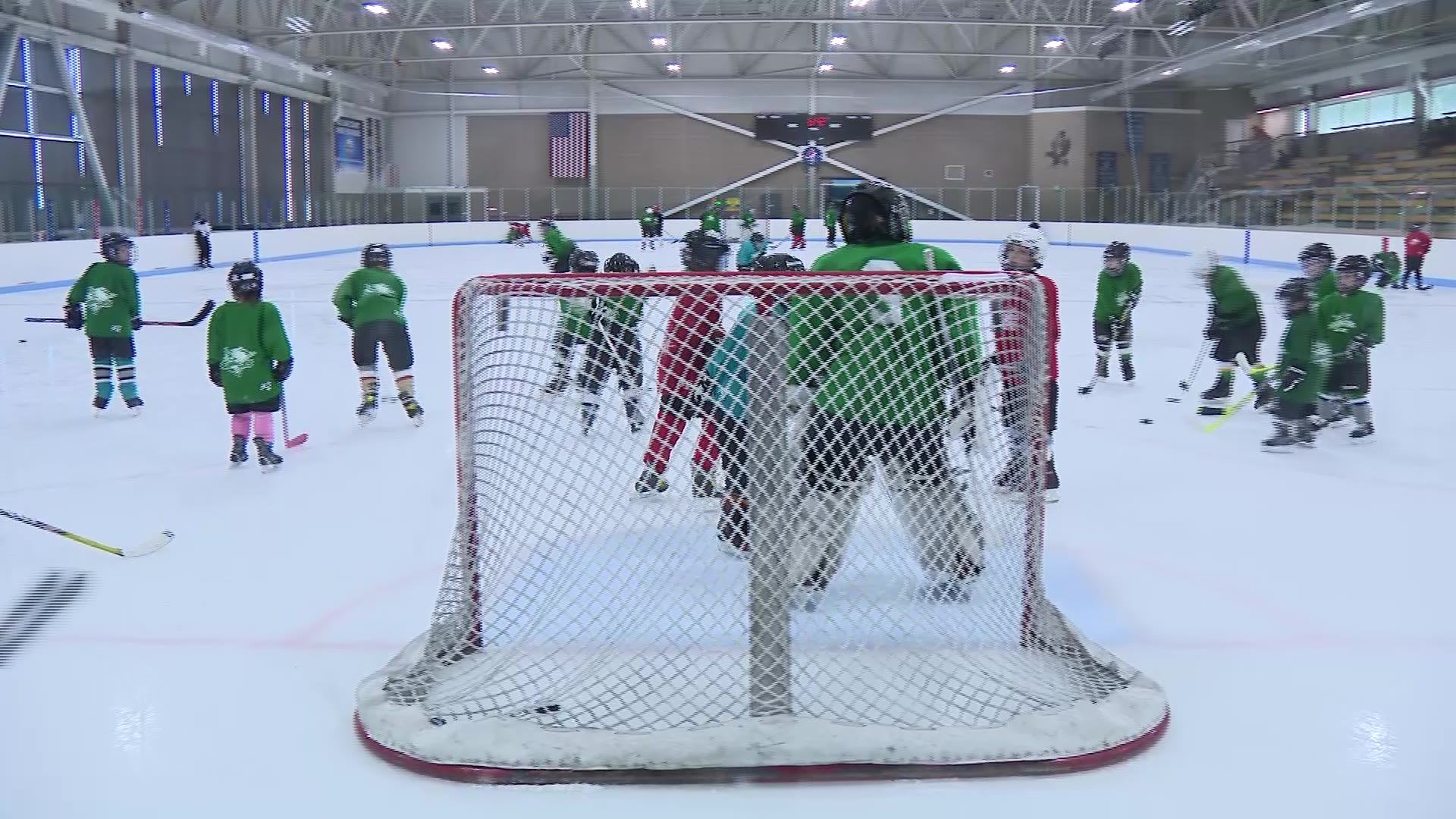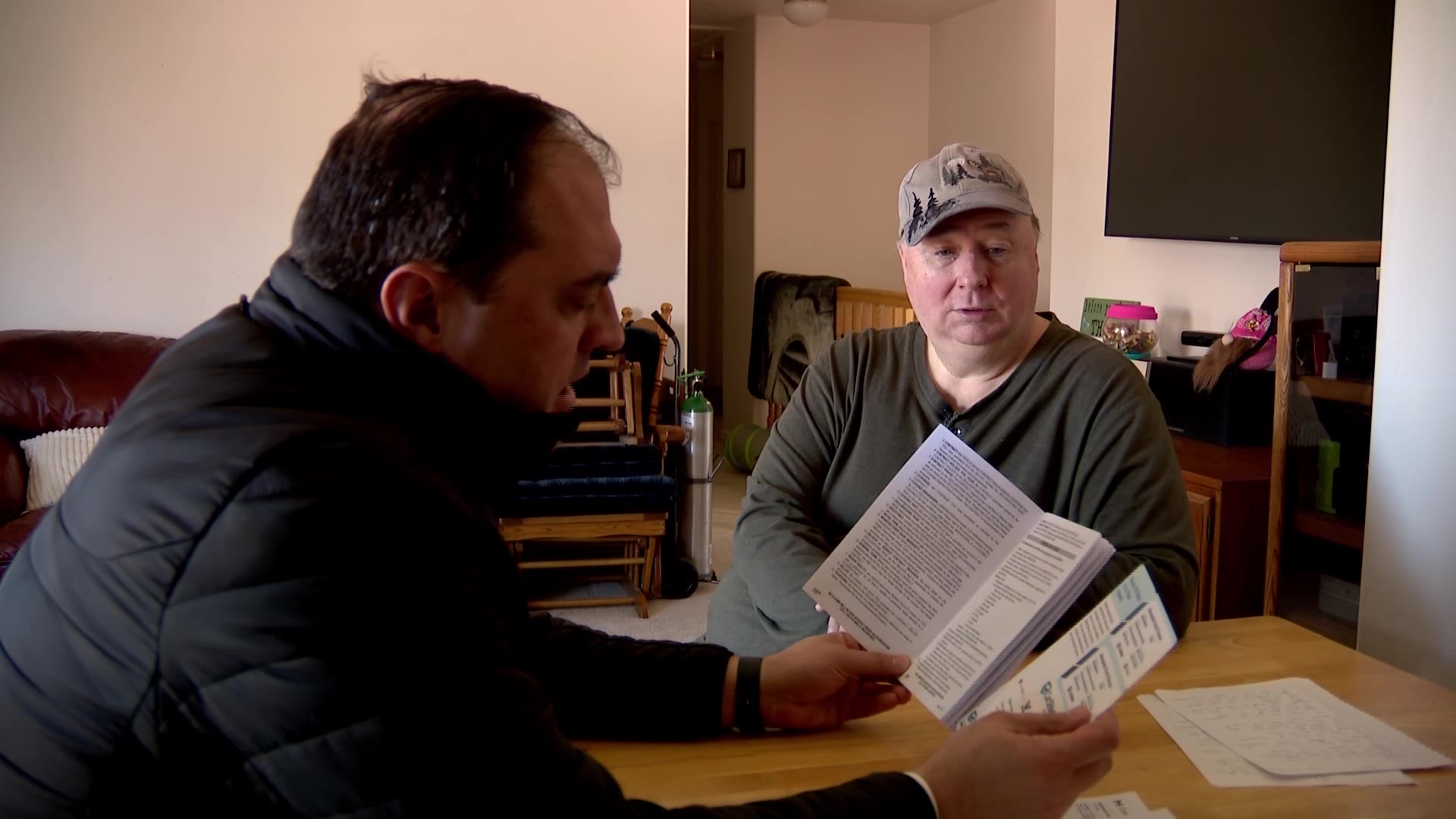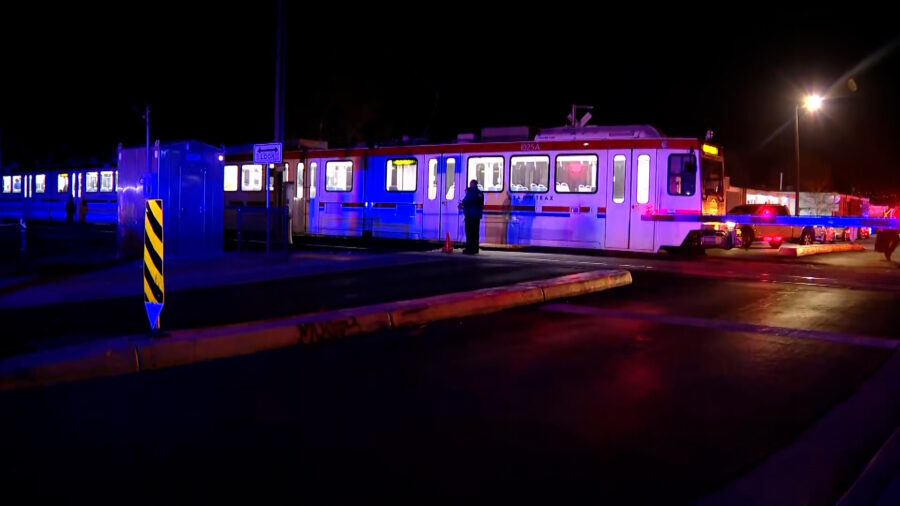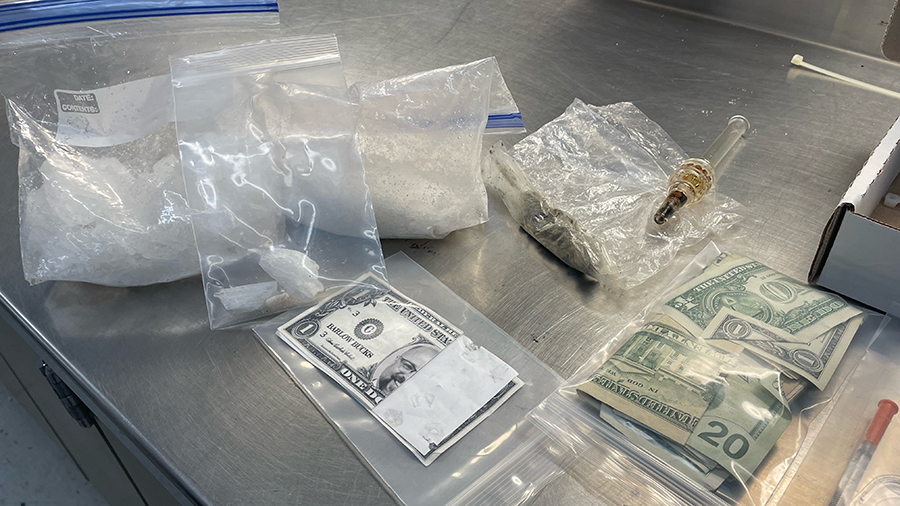Unified Fire Authority Gives Keys To Safe Ice Rescues
Jan 15, 2019, 6:59 PM | Updated: 8:44 pm
HERRIMAN, Utah – First responders with the Unified Fire Authority today honed their skills on life-saving ice rescues on the ice of Blackridge Reservoir in Herriman.
Each winter in Utah, several people and a few pets typically fall through the ice on a pond or reservoir.
When it comes to rescues of all kinds, Rescue Specialist Jason Jones said the first thing to keep in mind is to avoid being a victim in the first place. So, stay off the ice unless you are certain it is strong enough to support your weight – that means at least 4 inches thick.
When somebody goes through the ice, staying calm is the key. The rescue crews tell said people often overestimate how strong the ice is, and will venture out on thin ice.
“Staying off the ice is going to be the first thing,” said Jones.
Rescue teams with @FireAuthority work on their ice rescue skills at Blackridge Reservoir. The keys to a safe rescue at 6:30 @KSL5TV #KSLtv @kslnewsradio @KSLcom pic.twitter.com/5eddI6M6oz
— Jed Boal (@jedboal) January 16, 2019
People who go out ice fishing should know that the ice needs to be four inches thick before it will support a 250 pound person. For the rest of us, we should simply stay off the ice.
“Usually the people that we end up getting are going in after pets or unattended children,“ said Jones.
In the Salt Lake Valley that happens a handful of times every year, he said.
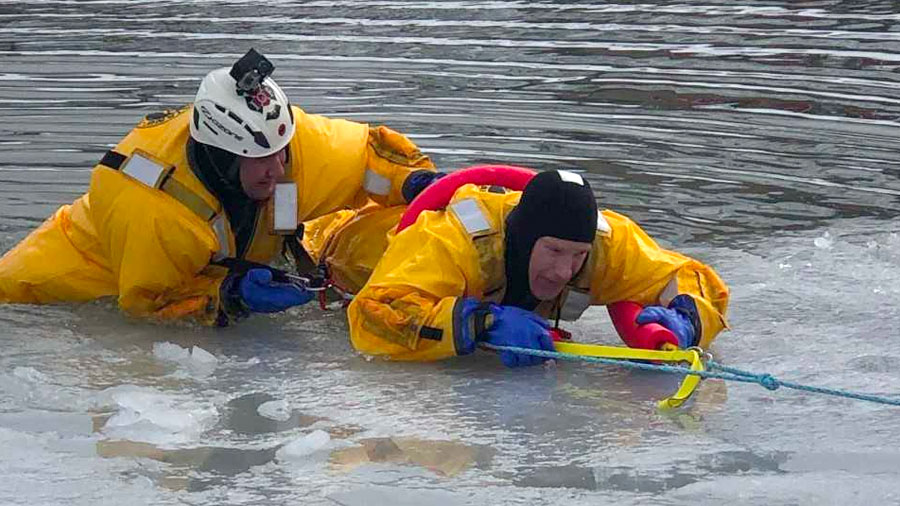
KSL reporter Jed Boal trains with first responders from the Unified Fire Authority at Blackridge Reservoir in Herriman, Utah.
If you’re on the shore and see a person or a pet go through the ice, call emergency dispatchers.
“Call 911. It’s hard to stay off the ice and not try to help,” said Jones. “We try to get that across to everybody. If you can reach something to them or throw something to them: a stick or a life jacket, anything you can throw to them that will help them and keep them stabilized until we get there, then we have the suits and equipment and we can go in and get them.“
Jones said crews wear dry suits, keeping them dry and warm during training in the icy water.
If you break through the ice, your clothes are going to get soaked very quickly and weigh you down. To make matters worse, the cold water is going to make your muscles and your lungs cramp up in about two minutes.
“They’re not going to have any thermal protection or anything,” said Firefighter Benjamin Porter. “Chances are, by the time we’re able to get out there, they’re going to have hypothermia set in. They’re going to start feeling numb.“
That’s why urging the victim to stay calm is critical.
“Tell them to remain calm and stay on the edge of the ice,” said Porter. “That way we can get in right on the edge and pull them out.“
You can try to reach for them with a branch or throw a rope, he said, but don’t go out on the ice yourself or you could become a second victim.
“We recommend that they don’t try and get out there. Give us a call,” said Jones. “We’ll get out there with our equipment and get them out.“


